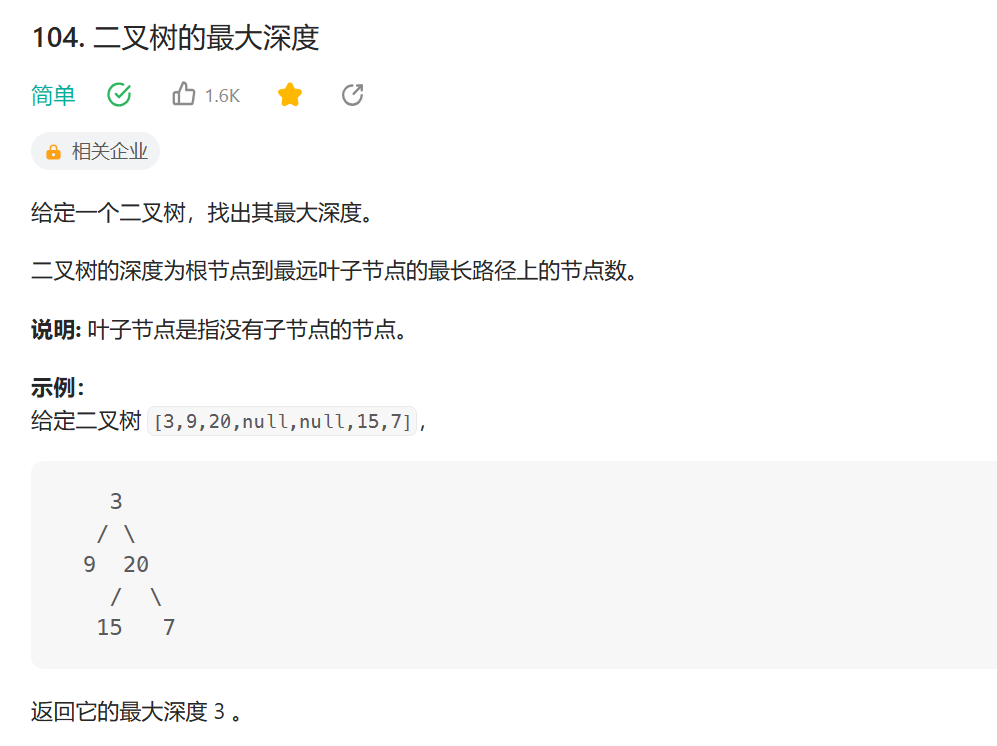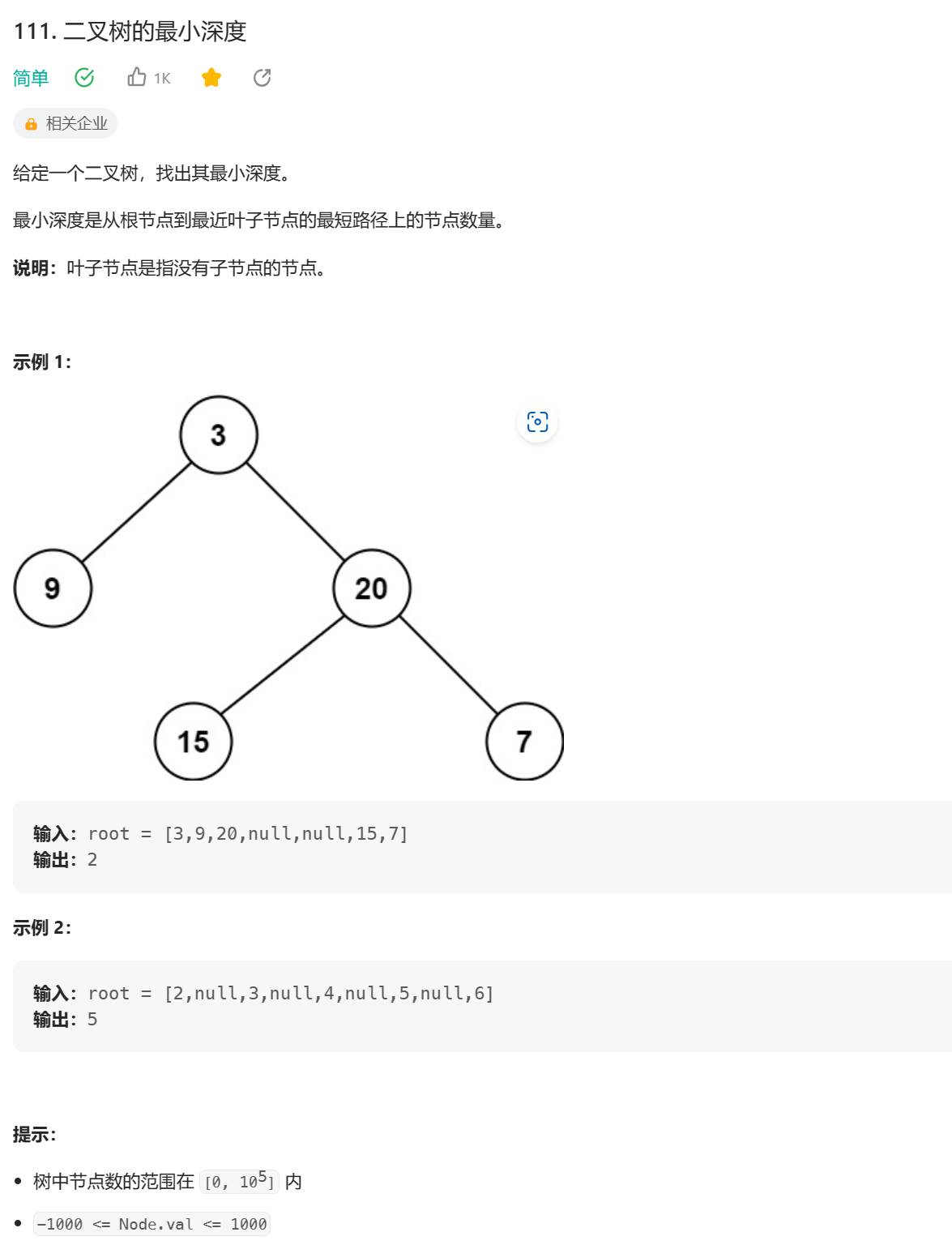题目
104. 二叉树的最大深度 - 力扣(LeetCode)

111. 二叉树的最小深度 - 力扣(LeetCode)

思路
深度 是指从根节点到该节点的距离(节点数量)
高度 是指从该节点到叶子节点的角力(节点数量)
最大深度 可以通过迭代法,计算总共有多少层。 可以使用递归分治的思想,1 + maxDepth(左子树) + maxDepth(右子树)
最小子树 其实和最大深度类似,但是这里要注意的是,不能直接套用最大深度的代码。最小子树的要求是,到叶子节点的距离。而上边最大深度没有这个要求。所以要对一侧子树为空的情况需要单独讨论。以下是代码实现:
最大深度
递归分治
后序遍历 需要调用自生函数,需要严格按照定义调用递归。
1
2
3
4
5
6
7
8
9
10
11
12
13
14
15
16
17
|
func maxDepth(root *TreeNode) int {
if root == nil {
return 0
}
rightMaxDepth := maxDepth(root.Right)
leftMaxDepth := maxDepth(root.Left)
return 1 + max(rightMaxDepth,leftMaxDepth)
}
func max(a,b int) int {
if a > b {
return a
}
return b
}
|
迭代 层序遍历
1
2
3
4
5
6
7
8
9
10
11
12
13
14
15
16
17
18
19
20
21
22
23
24
25
26
|
func maxDepth(root *TreeNode) int {
depth := 0;
if root == nil {
return 0
}
queue := []*TreeNode{}
queue = append(queue,root)
for len(queue) > 0 {
size := len(queue)
for i:=0;i <size ;i++ {
top := queue[0]
queue = queue[1:]
if top.Right != nil {
queue = append(queue,top.Right)
}
if top.Left != nil {
queue = append(queue,top.Left)
}
}
depth++
}
return depth
}
|
最小深度
递归
后序遍历
1
2
3
4
5
6
7
8
9
10
11
12
13
14
15
16
17
18
19
20
21
22
23
24
25
26
27
28
29
30
31
|
func minDepth(root *TreeNode) int {
if root == nil {
return 0
}
rightMaxDepth := minDepth(root.Right)
leftMaxDepth := minDepth(root.Left)
if root.Right == nil && root.Left !=nil {
return 1 + leftMaxDepth
}
if root.Left == nil && root.Right !=nil {
return 1 + rightMaxDepth
}
return 1 + min(rightMaxDepth,leftMaxDepth)
}
func min(a,b int) int {
if a > b {
return b
}
return a
}
|
迭代 层序遍历
1
2
3
4
5
6
7
8
9
10
11
12
13
14
15
16
17
18
19
20
21
22
23
24
25
26
27
28
29
30
| func minDepth(root *TreeNode) int {
depth := 0;
if root == nil {
return 0
}
queue := []*TreeNode{}
queue = append(queue,root)
for len(queue) > 0 {
size := len(queue)
for i:=0;i <size ;i++ {
top := queue[0]
queue = queue[1:]
if top.Right != nil {
queue = append(queue,top.Right)
}
if top.Left != nil {
queue = append(queue,top.Left)
}
if top.Right == nil && top.Left == nil {
return depth + 1
}
}
depth++
}
return depth
}
|


